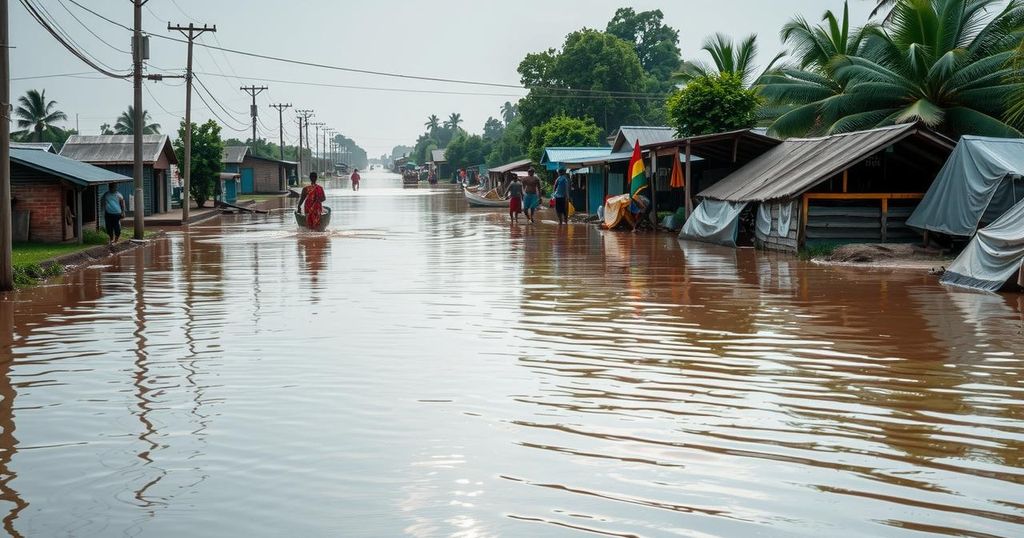The flooding crisis in South Sudan has escalated into a yearly disaster, displacing thousands; many now live precariously on the high grounds of the Jonglei Canal. The persistent flooding affects livelihoods, submerging villages and farmland while posing significant health risks to residents who must navigate dangerous waters seeking medical care.
Flooding has escalated into an annual tragedy for residents of South Sudan, particularly affecting the communities situated around the Jonglei Canal. With tens of thousands now residing on this increasingly scarce high ground, many find themselves entrenched in precarious living conditions. While seasonal flooding historically formed part of the pastoral lifestyle near the Sudd wetland, the continuous expansion of these floodwaters has led to the submersion of villages, destruction of agricultural land, and loss of livestock. Moreover, individuals recount perilous journeys through contaminated waters driven by the threat posed by venomous snakes just to reach essential medical facilities.
South Sudan, known for its vast wetlands, particularly the Sudd—Africa’s largest swamp—has been historically prone to seasonal flooding. These floods were once manageable for local pastoral communities who have adapted over generations. Recently, however, the scale and frequency of these floods have increased, creating dire living conditions and exacerbating already challenging societal issues. The growing inundation directly impacts food security and public health, as families are forced to relocate, and essential resources become inaccessible.
To conclude, the ongoing flooding crisis in South Sudan illustrates the severity of environmental changes affecting the region. The plight of those residing near the Jonglei Canal highlights an urgent humanitarian challenge, compounded by the loss of homes, agricultural viability, and livestock. Immediate action is necessary to address the rising waters and the dangers they present to the populace.
Original Source: apnews.com






